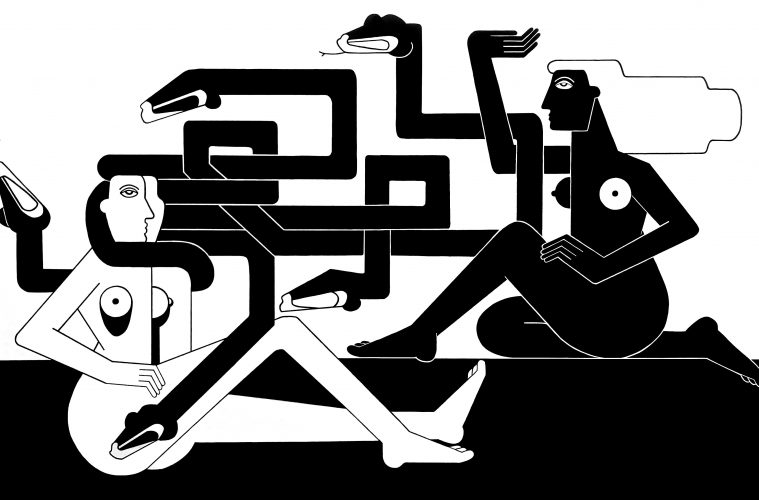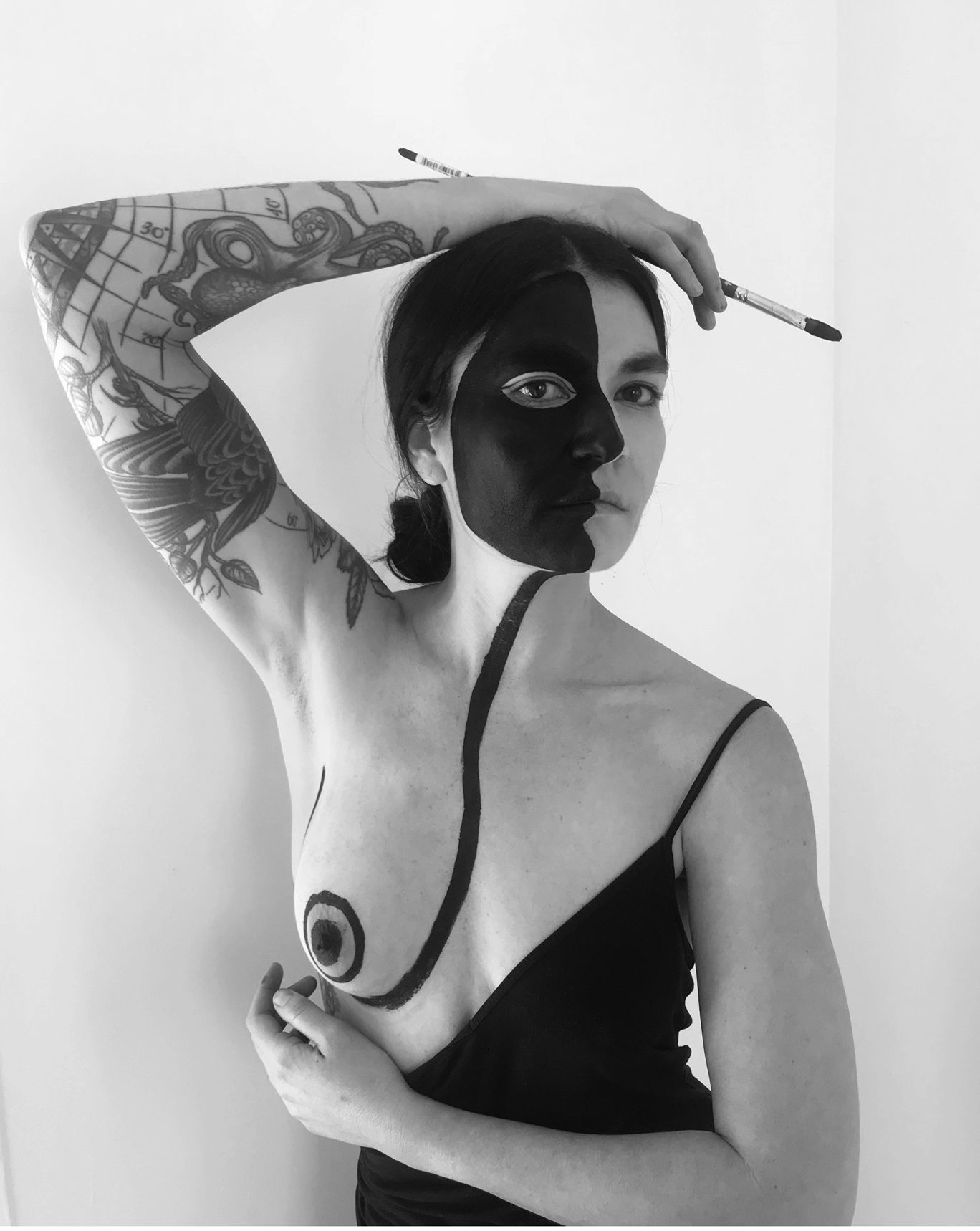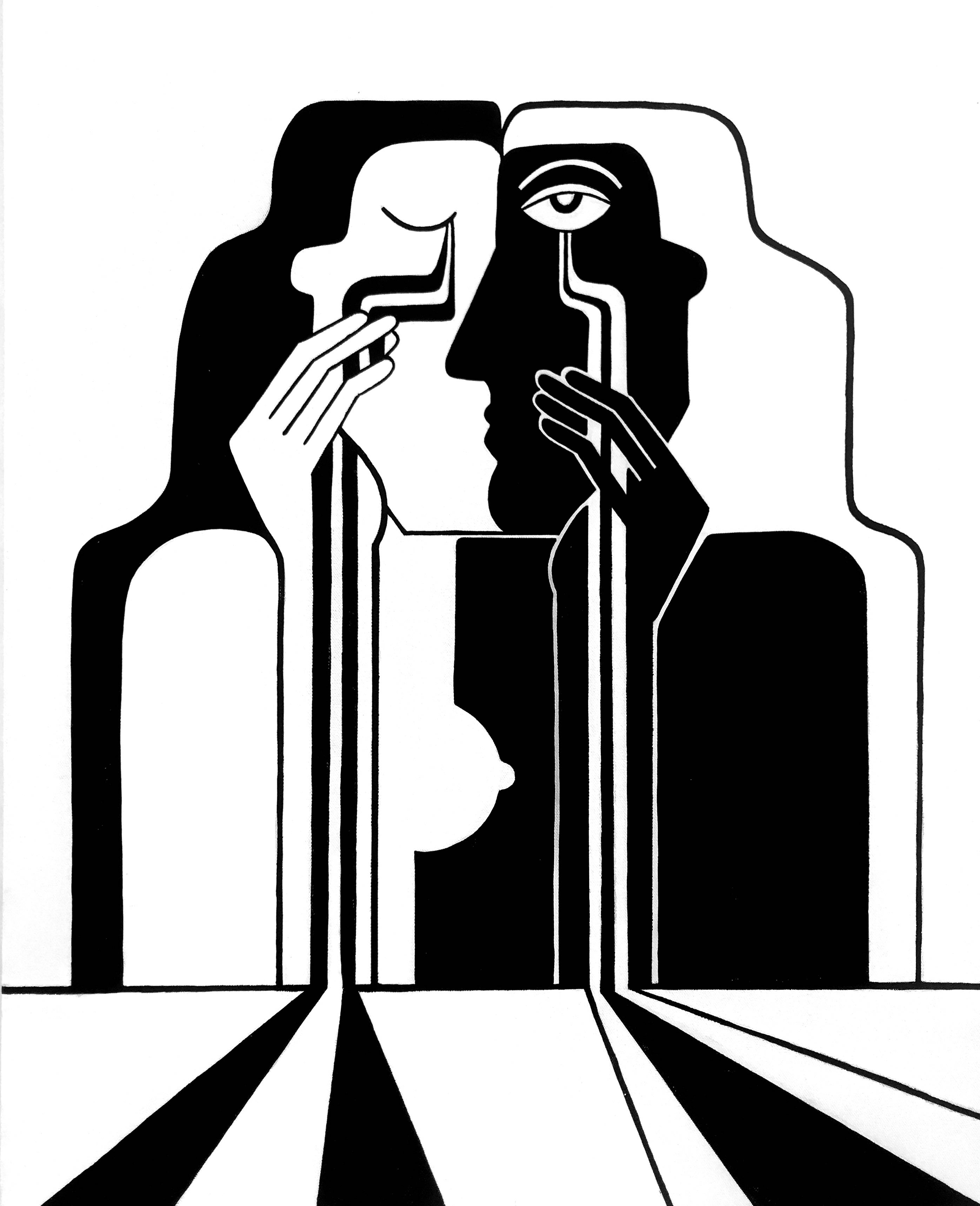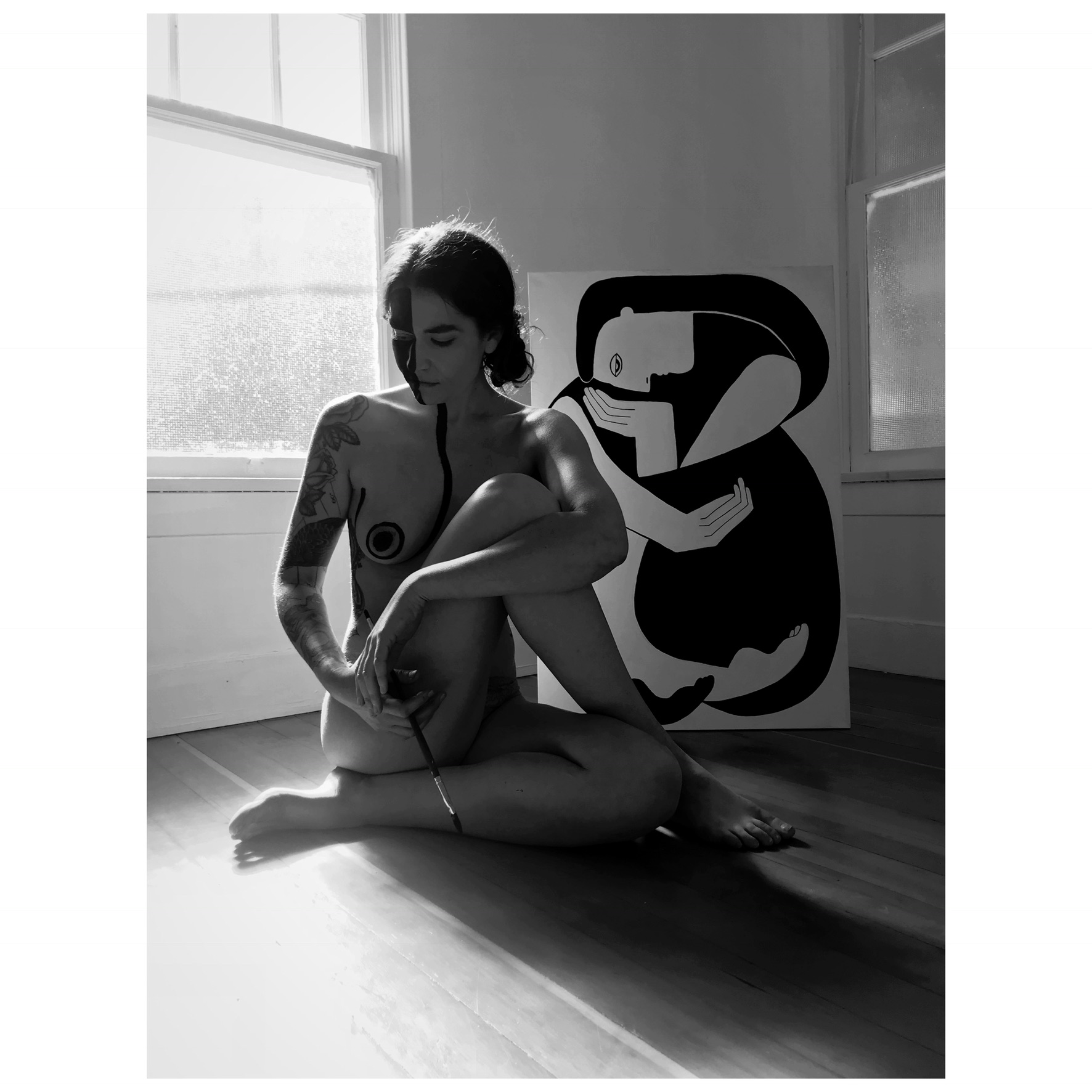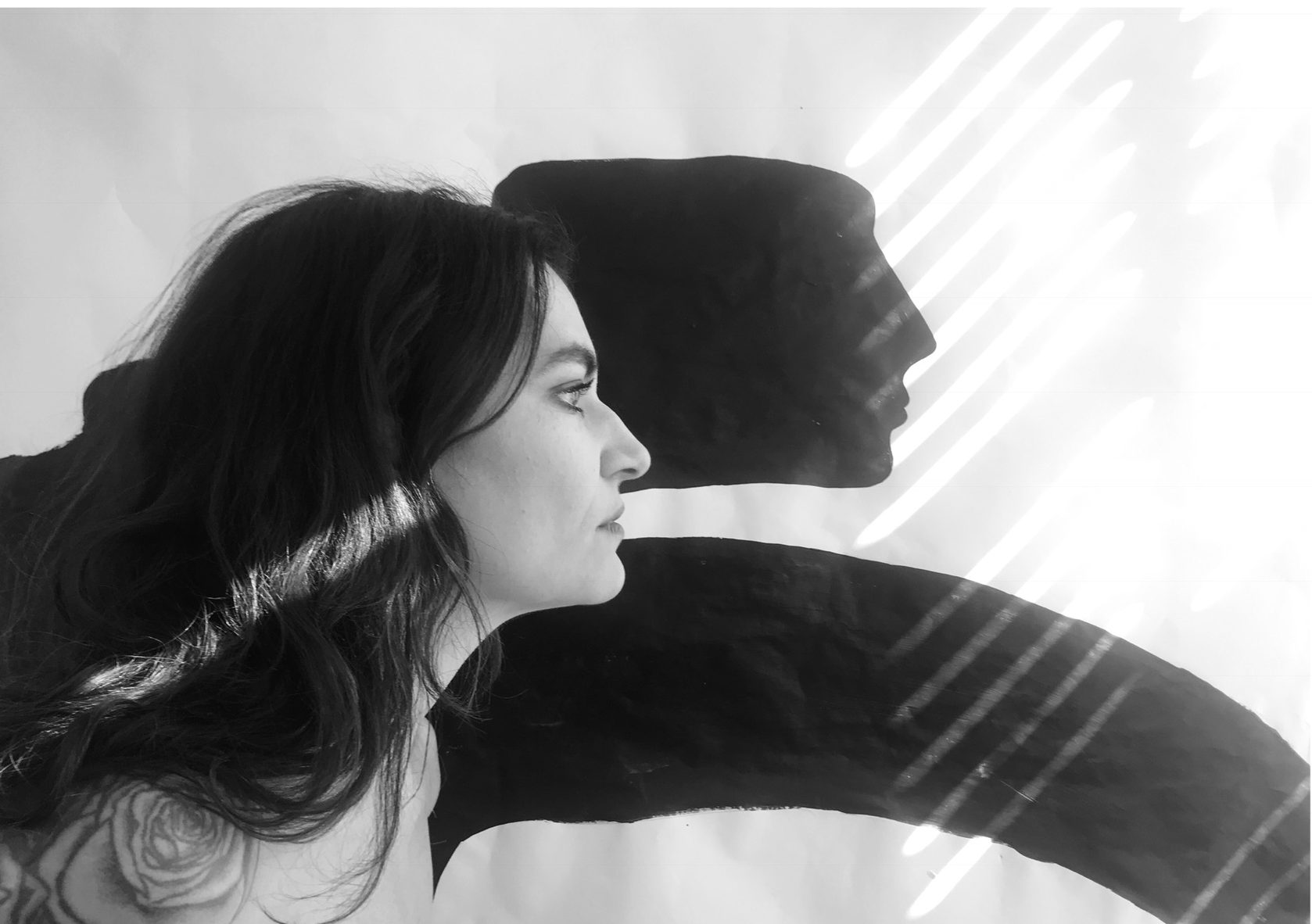“Me and my shadow,” Sammy Davis Jr. used to sing. “We’re closer than pages that stick in a book.” Our shadows are our constant companions, silently clinging to us and mirroring our every move. Jung used the shadow as a metaphor for our unconscious – all the dark aspects of our being that our conscious selves try to ignore. Plato saw in the play of shadows and light a model of the universe where everything is just a pale copy of an unseen, divine ideal. For Phoenix artist Elizabeth Brice-Heames, shadows point to the duality of being and what it is like to be trapped in self-reflection.
“When you’re faced with a decision, are you afraid of it, and do you step away from it?” Brice-Heames muses. “Is it fear, or do you need to hold it a little bit closer and examine it?”
Brice-Heames’ work is dominated by striking monochromatic imagery. Many of her works depict women and their shadows, caught between moments. It’s imagery that grapples with the duality of light and dark, with the possibility of connection: Do you make a decision to reach out to the world and risk losing something, or do you do nothing at all and face a different kind of loss?
Evidence of the painter’s interests in feminine archetypes and abstracted bodies is on full display in At Arms Length, her solo show at PALABRA, which opened on Third Friday in May. The show features an array of Brice-Heames’ bold black-and-white works. It’s an exhibition that the artist spent two months prepping for after PALABRA’s curator paid her studio a visit. “Jorge [Ignacio Torres] literally went through every single drawer and scrap of paper I had drawn on,” Brice-Heames says.
Brice-Heames uses her impressive linework to create evocative images of women that flirt with Cubism. Serpents writhe across one piece, twisting into dead-end squares like the old-school Snake video game. Her 2D figures jut their sharp, angular faces outward like hieroglyphic icons and Aztec gods.
The artist’s interest in a monochromatic color palette runs all the way back to her teenage years. “When I was about 13 or so, my uncle gave me a 35mm camera,” she says. “So for as long as I can remember, I’ve been a black-and-white photographer: 35mm format. That was actually the main mode of my artistic career – photography.”
Her early work with photography has deeply informed her painting. “I saw everything in this monochromatic scale. Within the last few years, painting was calling to me more and more, and the color palette didn’t change. I see the world in black and white and shades of gray from working with black-and-white photography for so long.”
In addition to photography, Brice-Heames’ interest in history, architecture and anthropology has influenced her evolution as an artist. “I want to know the history of everything,” she says about her experiences traveling around the world, soaking in local culture and learning the context of ancient buildings and works of art.
For Brice-Heames, travel is a kind of muse. “Being in a new place just sparks something,” she says. “Last May, I was working in this one particular style. I went traveling over the summer and ended up staying in Barcelona for about a month. It was interesting. When I was leaving Barcelona, I felt like my style had progressed. I was surrounded by Picasso and so many other amazing artists. My style had become more minimalist, a little more Cubist.”
You can see the effects of that Barcelona trip on her work. Her feminine figures are bent and warped by Cubism’s cracked sense of geometry. That sense of bodies in flux helps convey Brice-Heames’ themes of reflection and doubt. These are ladies in metaphysical waiting, struggling to figure out which future they’ll attend to.
A busy creative, Brice-Heames has another show she’s prepping for after her At Arms Length exhibition closes. And while she’ll continue to make black and white the stars of her solo shows, she’s not opposed to letting the rest of the rainbow shine through the prism of her work at some point.
“I’m excited to see when color will make an appearance in my work,” she beams. If she can already do so much with just black and white, one can only imagine the kind of jaw-dropping imagery she will conjure up after giving the rest of the color wheel a spin.

